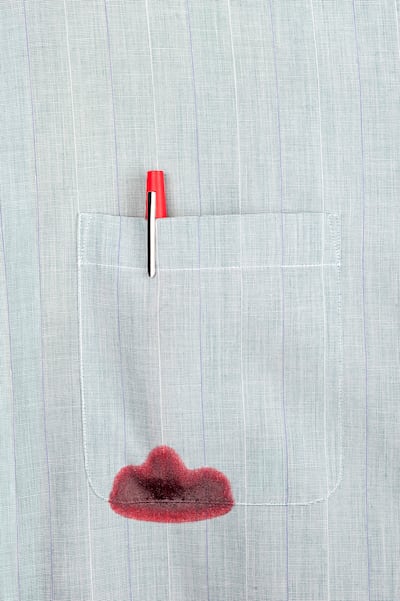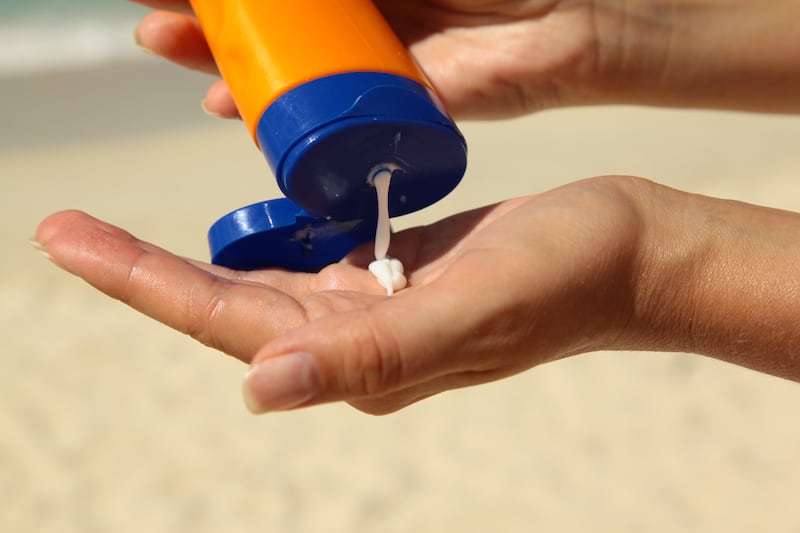The basics
Steve Anderton, a laundry expert from the consultancy group LTC Worldwide, recommends testing garments for colourfastness before you attempt any stain removal.
He says to pick an area of the garment that can’t be seen, such as the back of a hem. Apply whatever stain removal technique you were going to attempt with a white cloth and see if any colour transfers. If it does, he says to “give it to a professional cleaner to remove the stain”.
Different fabrics react to stains in different ways, so when dealing with a spill it’s important to check the fabric composition of your garment and the composition of the stain, then proceed accordingly.

Pen ink
Ink stains from ballpoint pens are some of the sneakiest stains. One of my favourite shirts has a faint scribble across the pocket and I have no idea how it got there. Christina Reitano, a stain-removal specialist says: “I find rubbing alcohol [isopropyl alcohol] really effective for removing ink.”
Four ways to use less electricity with your Christmas lights
‘I am embarrassed for him’: Roy Keane scarlet for Kyle Walker before Manchester turns red
Mario Rosenstock: ‘Everyone lost money in the crash. I was no different, but it never bothered me’
Irish rail disruption hell: ‘There has not been one day without delays on the train’
She warns that ink stains can spread when they get wet, so it’s important to place something absorbent underneath the garment and dab the marks with a little alcohol applied to a white cloth. Anderton adds that you should surround the stain “with a small circle of glycerine to form a protective barrier around (but not over) the stain”. This should contain the stain and can be blotted off afterwards.
Anderton suggests using a product specifically designed to remove ink stains. These can be purchased at most supermarkets, but he warns to “follow the directions carefully”.
Turmeric
According to Anderton, the reason turmeric is so difficult to remove is because the tiny powder particles are slightly oily, so they tend to penetrate fabric. “This prevents simple, water-based stain removers for natural dyes getting to the root of the discolouration,” he says.
Instead, start by blotting (not rubbing) the stain using a clean white cloth to remove any excess and contain the spread. Then, he says, make a concoction of two tablespoons of white vinegar to one tablespoon of washing-up liquid and stir. Add one teaspoonful of a good-quality colour detergent and stir quickly. While the mixture is still frothing, cover the stain with it and use the back of a spoon to ensure the mixture fully penetrates the fabric and stain. Leave it like this for half an hour, then rinse thoroughly in clean, cold water.
With luck the stain will be flushed away, but if there is any stain shadow remaining, he says, “apply a little bleaching powder” — preferably one that contains sodium percarbonate — “as a thin paste”. Leave it for five to 10 minutes and then flush it off.
[ No sweat! How to prevent yellow stains and lingering smells on clothesOpens in new window ]
Black grease
Anderton says black grease stains tend to be made up of tiny dark particles in the mineral oil or grease. So the key to removing these stains is to remove the grease and the dark particles simultaneously.
If the grease is stripped out first, you risk the dark particles becoming locked in the yarns of the material. Once this happens they can be impossible to remove.
“You need a mixture of strong organic solvents (to dissolve the grease), a powerful liquid detergent (to lubricate and aid grease removal) and some suspending agent (to wrap around the particles and carry them safely away),” he says. Anderton suggests using a specific grease-stain remover.
Usually these require the article to be washed after application. But if the item is not washable, he says “you will need to lay the stain over a clean white cloth pad and dab it repeatedly with a second clean white cloth, applying a little white spirit from time to time, until the stain is clear”.

Suncream
Reitano says the issue with sunscreen stains is one ingredient that oxidises in hard water. That’s why suncream stains often “appear after you have thrown a sunscreen-soaked top into the wash”.
“If the stain feels greasy, try washing it as per a grease stain [with dishwashing detergent], then like a rust stain — with lemon juice and salt,” she says. Then “put in the sun”. Make sure you wash it using cold water.
Make-up
When dealing with make-up stains, Reitano recommends diluting a few drops of eucalyptus oil in a spray bottle of water, then spray a clean cloth with the mixture. Use the cloth to gently dab at the stain until it is lifted from the fabric, and follow with a regular wash.
Anderton suggests applying a little “neutral lubricating detergent to the stain” and carefully working it into the fabric until you have created a foam that has been mixed into every bit of the stain. Let this sit for five to 10 minutes and then carefully blot the stain using a clean white cotton cloth, until no more make-up comes off. Rinse it carefully under cold water, then wash the item immediately.
What to do when a stain won’t budge
The reality is not every stain is possible to remove. But this doesn’t mean the garment is ruined. Simple alterations, such as taking up a stained hem, or getting a tailor to remove stained sleeves, can keep the piece in your wardrobe. It might also be possible to dye the garment using an at-home kit. Or you could get creative with visible mending techniques, including embroidery or patches.





